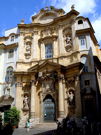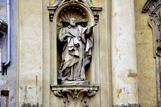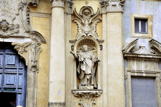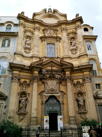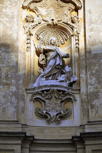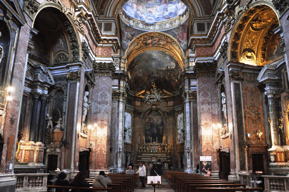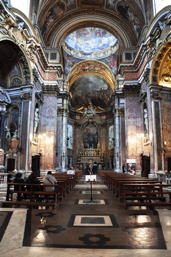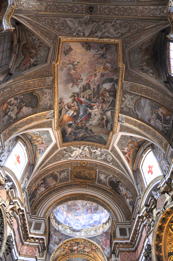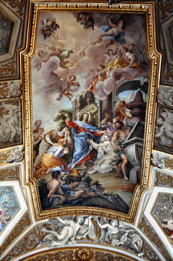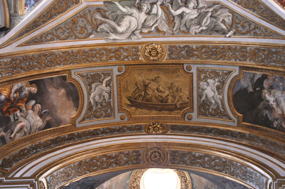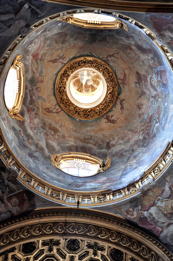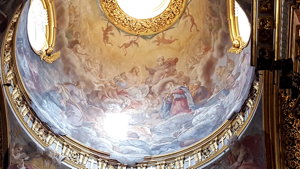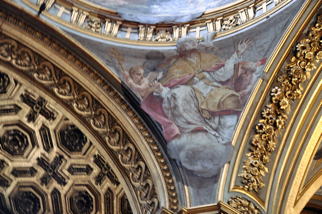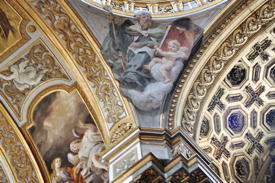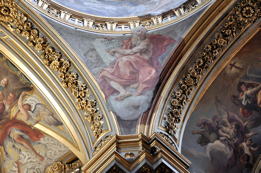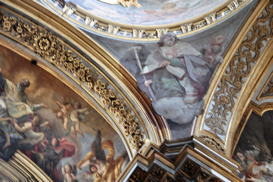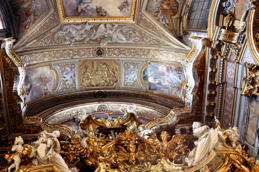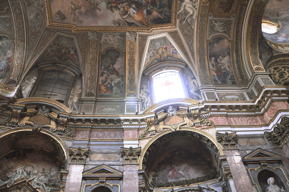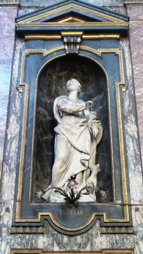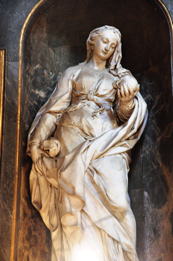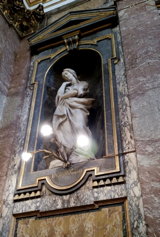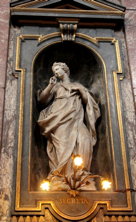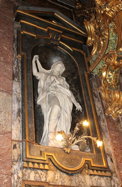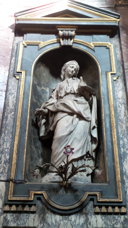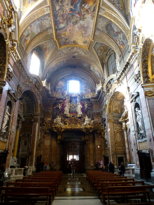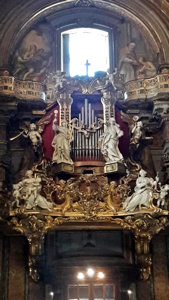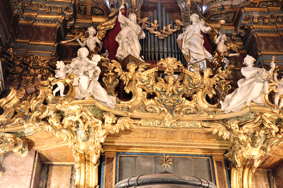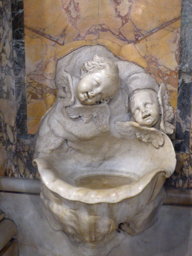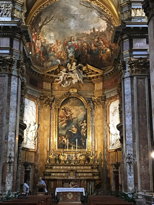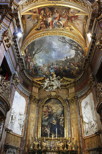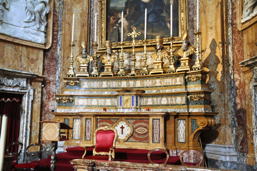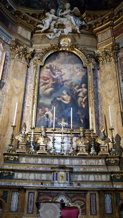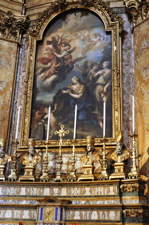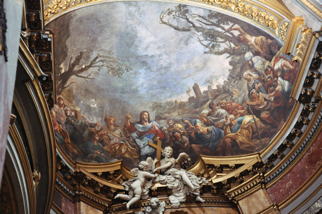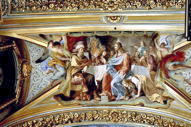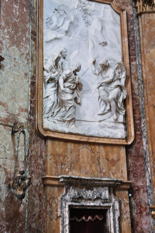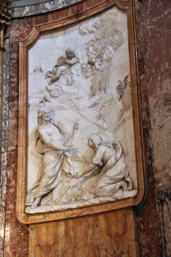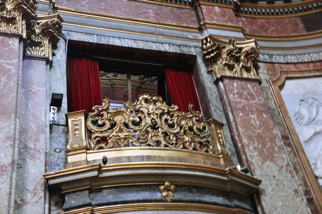La Maddalena is a 17th century Baroque-Rococo convent church just north of the Pantheon on Piazza della Maddalena, dedicated to St Mary Magdelene. The full name of the church is
Santa Maria Maddalena in Campo Marzio, but this is very rarely used. It is usually refer to it simply as
Santa Maria Maddalena. The church is served by the Priests Ministers of the Sick also known as Camilliani. It is the regional church in Rome for expatriates from the Abruzzo region of Italy.
For reference, a plan of the church is available
here.
The first documented reference is in a private will of someone called Madonna Rosuccia, dated 1403. Later that century it emerges as Santa Maria Maddalena dei Battuti, and was attached to a hospital being run by a Confraternita dei Disciplinati. By the mid 16th century, the complex was in bad repair. In 1586, Pope Sixtus V entrusted the complex to
Camillo de Lellis who made it the main seat of the Order of Clerks Regular, Ministers of the Infirm (abbreviated as M.I.), better known as the Camillians which he founded. St. Camillo died here in 1614.
With a grant from Pope Gregory XV the church was rebuilt (1640-1642) by the architect,
Giacomo Mola. In 1673
Carlo Fontana was in charge of a new phase of work building the dome and the vault, which after an interruption, was taken up again in 1694 by
Giovanni Antonio de'Rossi, who was responsible for the final phase. The façade was completed in 1735. In 1738 to 1741,
Carlo Marchionni finished off the decorative elements in the church, and built the famous sacristy.
The next major intervention was by Francesco Nicoletti between 1753 and 1758, to whom belongs much of the polychrome marble revetting of the interior. He also refitted the right hand transept chapel, and created the Chapel of the Crucifix. This was finished in 1764. There was a restoration in 1870, when the first chapel on the right was re-fitted.

